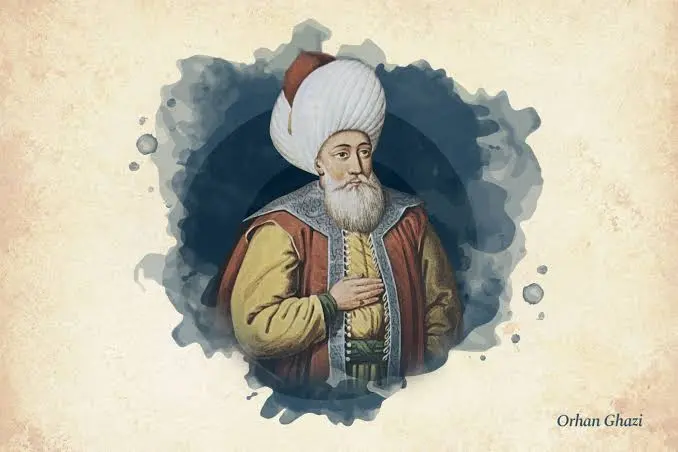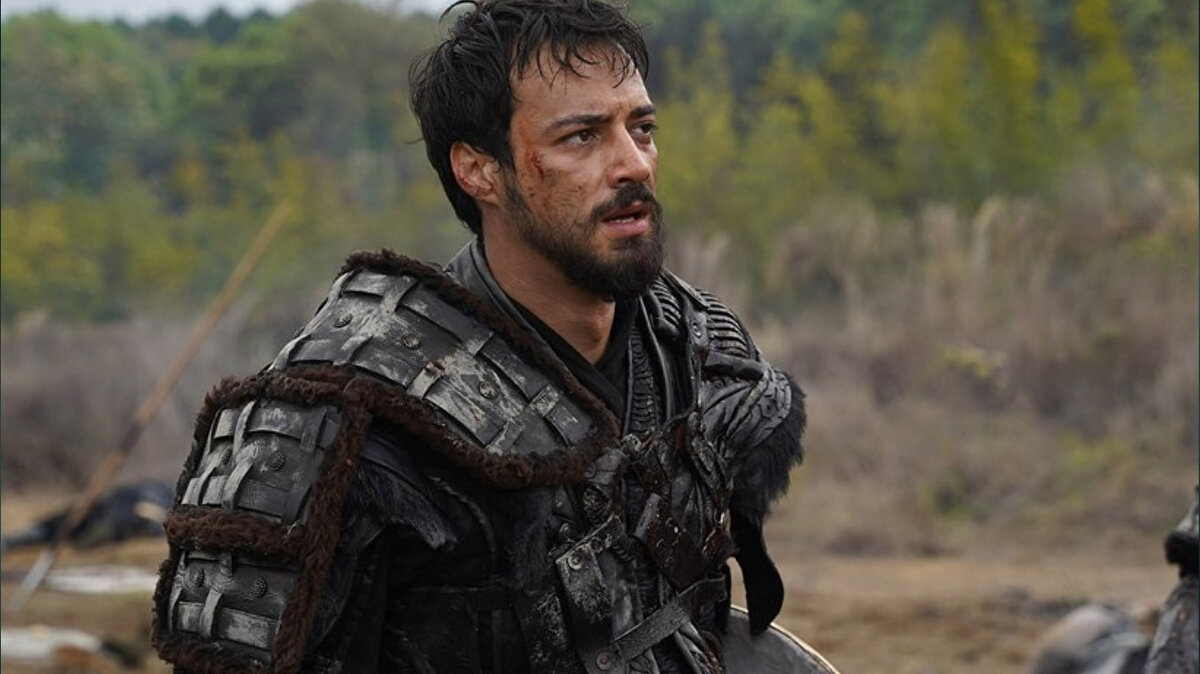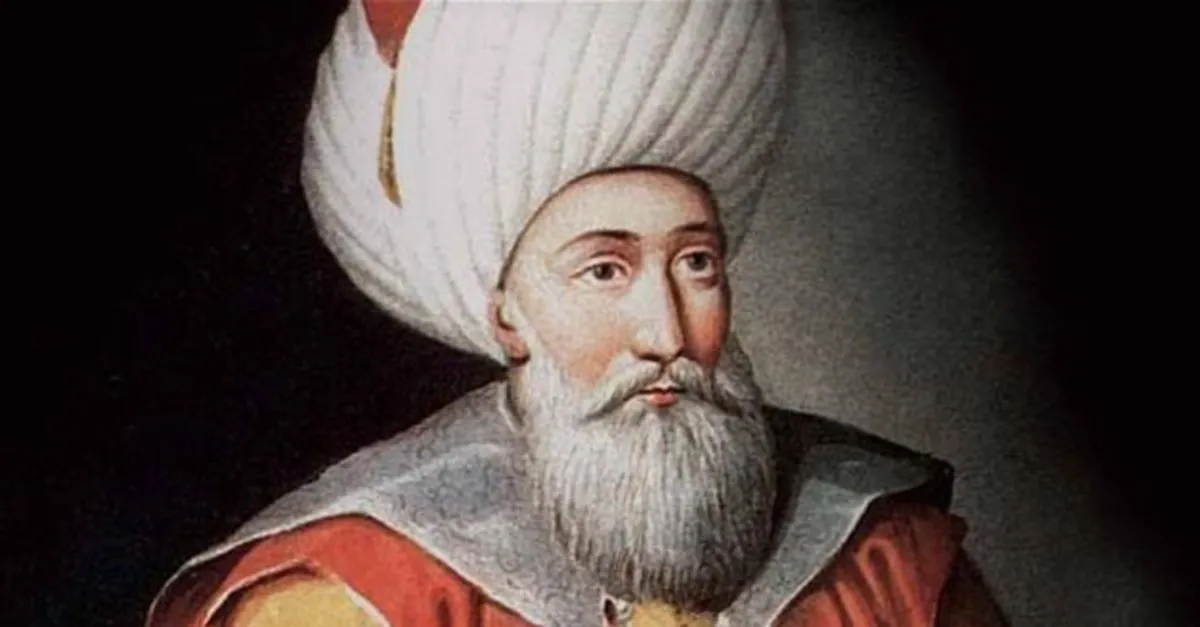
Who Was Orhan Bey (Orhan Gazi)? Life, Reforms, Family, and Achievements of the Second Ottoman Ruler
Orhan Bey, also known as Orhan Gazi, was the second ruler of the Ottoman Beylik and the son of Osman Gazi, founder of the Ottoman Empire, and Malhun Hatun. Born around 1280/1281, Orhan Gazi lived for approximately 80 years and ruled from 1324 to 1362.
He was known as a tall, fair-haired, blue-eyed, and courageous leader, celebrated for his bravery, compassion, and strategic military mind. Following his father’s death, he ascended to power in 1326, marking the beginning of a transformative era in Ottoman history.
The life of Orhan Gazi is currently dramatized in the Turkish TV series “Kuruluş Orhan”, aired on ATV and ForumKayi.com, with actor Mert Yazıcıoğlu portraying the legendary ruler. The show has attracted global attention and has been sold to several international networks.

How Long Did Orhan Gazi Rule?
Orhan Gazi ruled the Ottoman Beylik for about 38 years. Although details about his childhood and youth remain scarce, historical sources debate whether he succeeded his father before or after Osman Gazi’s death.
Upon becoming Bey, he was honored with the titles “Şücaeddin,” “İhtiyareddin,” and “Seyfeddin.” He was the first Ottoman ruler to have a tughra (imperial signature) and the first to use the title “Sultan.”
Major Conquests During Orhan Gazi’s Reign
Orhan Gazi expanded Ottoman territories significantly, transforming the small frontier principality into a rising power. His major conquests include:
-
1321 – Mudanya
-
1326 – Bursa (Ottoman Capital Established)
-
1329 – İznik (Nicaea)
-
1331 – Taraklı, Mudurnu, Göynük
-
1333 – Gemlik
-
1337 – İzmit (Nicomedia)
The Battle of Pelekanon (Palekanon) in 1329 was a major victory against the Byzantine Empire, paving the way toward Istanbul (Constantinople).
Relations with Anatolian Beyliks
During Orhan Gazi’s rule, the Ottomans continued paying tribute to the Ilkhanids of Persia, like other Anatolian principalities. In 1345, the Karasioğulları Beylik was annexed into Ottoman territory — a crucial step toward unifying northwestern Anatolia.
The Germiyanoğulları were among the other prominent beyliks during this era.

Reforms and Innovations Under Orhan Gazi
Orhan Gazi’s reign was marked by key administrative, military, and economic reforms that laid the foundation of the Ottoman state:
-
Establishment of the first central council (Divan-ı Hümayun)
-
Appointment of the first Grand Vizier
-
Creation of the first regular army known as Yaya and Müsellem
-
Founding of the first madrasa (Islamic school)
-
Introduction of the first state budget
-
Opening of the first Ottoman mint (Darphane)
-
Construction of the first naval dockyard in Karamürsel
-
Establishment of the first bedesten (covered market) and royal palace
Through these reforms, Orhan Gazi transformed the Ottoman Beylik from a small principality into a well-organized state. He expanded its borders from 16,000 km² under Osman Gazi to nearly 100,000 km² by the time of his death.
Orhan Gazi’s Wives and Children
Orhan Gazi’s most famous marriage was to Holofira, the daughter of the Byzantine ruler of Yarhisar. After converting to Islam, she took the name Nilüfer Hatun. Many historical landmarks in Bursa still bear her name.
He is also believed to have married Asporça Hatun, Theodora Hatun, and Eftandise Hatun.
Children of Orhan Gazi:
-
From Nilüfer Hatun: Sultan Murad I, Süleyman Pasha, and Şehzade Kasım
-
From Asporça Hatun: Şehzade İbrahim and Fatma Hatun
-
From Theodora Hatun: Şehzade Halil
-
Others: Şehzade Eyüp and Hatice Hatun
Death and Tomb of Orhan Gazi
According to historical records, Orhan Gazi died in 1362 in Bursa, likely due to the plague. His tomb, the Orhangazi Mausoleum, is located in the Tophane district of Bursa, opposite his father’s Osmangazi Tomb. The structure stands on the remnants of the Sainte Elie Monastery, a Byzantine site repurposed after Bursa’s conquest.
Legacy
Orhan Gazi is remembered as the ruler who transformed the Ottoman Beylik into a state, introduced its first institutions, and paved the way for future conquests. His rule established the foundations upon which the Ottoman Empire would rise and dominate three continents for centuries.


Comments
You must be signed in to post a comment.
Already a user? Sign in